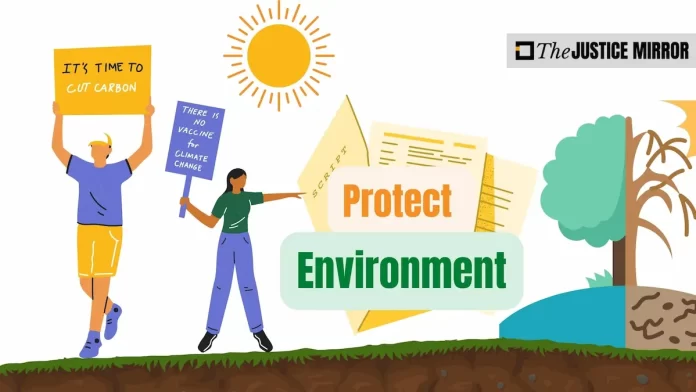In the fight against climate change, the focus often centers on reducing carbon dioxide emissions.
However, another group of pollutants known as short-lived climate pollutants (SLCPs) also play a significant role in global warming and environmental degradation.
Addressing this issue requires a concerted effort from the international community, and the Climate and Clean Air Coalition (CCAC) stands as a pioneering initiative to tackle these pollutants.
This article delves into the origins, objectives, accomplishments, and future prospects of the CCAC, highlighting its vital role in creating a more sustainable and healthier planet.
Origins and Objectives
The Climate and Clean Air Coalition was launched in 2012 under the United Nations Environment Programme (UNEP) to address the urgent need to curb SLCP emissions.
SLCPs, which include methane, black carbon, and hydrofluorocarbons (HFCs), are potent contributors to global warming and air pollution.
The CCAC recognizes that mitigating these pollutants not only slows down near-term climate change but also provides immediate benefits for public health, agriculture, and the environment.
Key Objectives of the CCAC
- Reducing SLCP Emissions: The primary goal of the CCAC is to reduce the emissions of SLCPs, which have a significantly shorter atmospheric lifespan compared to carbon dioxide. This focus on short-lived pollutants yields rapid results in terms of both climate and health impacts.
- Promoting Policy and Technological Solutions: The coalition works to promote policies and technologies that target SLCP emissions. This includes advocating for the adoption of cleaner technologies, improved waste management, and the reduction of harmful emissions from various sources.
- Raising Awareness and Building Capacity: The CCAC engages with governments, civil society, academia, and the private sector to raise awareness about the importance of addressing SLCPs. The coalition also builds the capacity of these stakeholders to develop and implement effective strategies for SLCP mitigation.
- Global Partnerships: The CCAC operates through partnerships and collaborations, bringing together governments, international organizations, non-governmental organizations (NGOs), academia, and the private sector. This collaborative approach enhances the impact of SLCP reduction efforts.
- Integrating Climate and Health: Recognizing the interconnectedness of climate change and public health, the CCAC promotes strategies that simultaneously benefit both by reducing SLCP emissions. This integrated approach leads to a healthier and more sustainable world.
Achievements and Impact
Since its inception, the Climate and Clean Air Coalition has made significant strides in curbing short-lived climate pollutants and promoting sustainable practices. Some of its notable accomplishments include:
- Methane Reduction: The CCAC has been instrumental in efforts to reduce methane emissions, particularly from sectors such as agriculture, oil and gas production, and waste management. Methane mitigation not only curbs climate change but also prevents the release of harmful pollutants into the atmosphere.
- Black Carbon Mitigation: The coalition’s focus on reducing black carbon emissions has led to the implementation of cleaner cooking technologies, improved stoves, and enhanced waste management practices. These efforts have contributed to improved air quality and reduced health risks in vulnerable communities.
- HFC Phasing Out: The CCAC has played a crucial role in advocating for the phase-out of hydrofluorocarbons (HFCs), potent greenhouse gases commonly used in refrigeration and air conditioning. The Kigali Amendment to the Montreal Protocol, which aims to gradually eliminate HFCs, stands as a significant achievement of the coalition.
- Capacity Building: Through its workshops, trainings, and knowledge-sharing initiatives, the CCAC has empowered governments and institutions to develop effective SLCP reduction strategies tailored to their specific contexts.
- Awareness and Advocacy: The CCAC’s advocacy efforts have raised awareness about the importance of SLCP mitigation, influencing policy decisions and encouraging the adoption of cleaner technologies across various sectors.
Future Prospects
As the world grapples with the complex challenges of climate change and environmental degradation, the Climate and Clean Air Coalition remains poised to drive further change. The coalition’s future prospects include:
Expanding Membership: The CCAC can continue to expand its membership, engaging with more countries, organizations, and stakeholders to amplify the impact of SLCP reduction efforts.
Innovation: Embracing innovative technologies and approaches will enable the coalition to develop more efficient and effective solutions for SLCP mitigation.
Policy Advocacy: The CCAC can continue to advocate for the adoption of policies and international agreements that promote SLCP reduction, such as the Kigali Amendment.
Community Engagement: Strengthening community-level engagement and promoting behavior change can contribute to reducing SLCP emissions at the grassroots level.
Conclusion
The Climate and Clean Air Coalition serves as a beacon of hope in the battle against short-lived climate pollutants.
By addressing these potent contributors to global warming and air pollution, the coalition demonstrates the importance of a multi-pronged approach to tackling climate change and fostering a healthier planet.
As it looks towards the future, the CCAC’s contributions will remain vital in advancing the global agenda for sustainable development, proving that addressing SLCPs is not only an environmental imperative but also a pathway to a more prosperous and sustainable world for all.
